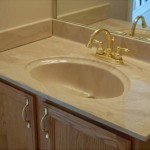How to Plan Bathroom Tiles
Designing a bathroom involves numerous decisions, and choosing the right tiles is a crucial aspect. It's an investment that impacts the look, feel, and functionality of the space for years to come. This guide provides a comprehensive framework for planning your bathroom tile project, ensuring a seamless and satisfying outcome.
1. Understanding Your Needs and Style
The first step is to define your bathroom's purpose and aesthetic. Consider who will be using the bathroom and what their needs are. Do you require a sleek, modern design or a warm, traditional ambiance? Are you aiming for a spa-like retreat or a functional family space?
Once you have a clear vision, explore tile options that align with your style. Browse through tile showrooms, online retailers, and design magazines for inspiration. Pay attention to different tile materials, such as ceramic, porcelain, natural stone, and glass, each offering unique characteristics and aesthetic possibilities.
2. Choosing the Right Tile Type
The choice of tile type depends on various factors, including your budget, desired aesthetic, and the bathroom's layout. Here are some popular choices:
-
Ceramic tiles:
Affordable, durable, and available in a wide range of colors and patterns, making them suitable for floors, walls, and backsplashes. -
Porcelain tiles:
Highly durable, water-resistant, and available in various styles, making them ideal for high-traffic areas and wet environments. -
Natural stone tiles:
Elegant and unique, offering a wide variety of textures and colors, but they can be more expensive and require specialized maintenance. -
Glass tiles:
Add a touch of luxury and light to the bathroom, suitable for walls and backsplashes, but they can be delicate and prone to scratches.
Consider the following factors when selecting tile types:
-
Durability:
Choose tiles that can withstand moisture, foot traffic, and cleaning products. -
Slip resistance:
Especially important for floors, choose anti-slip tiles, particularly in areas prone to water splashes. -
Water absorption:
Select tiles with low water absorption for high-moisture environments. -
Maintenance:
Choose tiles that are easy to clean and maintain.
3. Planning the Bathroom Layout
A well-planned layout ensures that tiles are used effectively and create a harmonious design. Consider the following factors:
-
Tile size:
Larger tiles create a spacious feel, while smaller tiles add visual interest. -
Tile pattern:
Choose a pattern that complements the overall aesthetic, such as herringbone, subway, or geometric. -
Grout color:
Select a grout color that contrasts or complements the tile color, adding visual depth and defining the tile layout. -
Lighting:
Determine the location of light sources to ensure adequate illumination for the bathroom.
Create a detailed plan of the bathroom layout, including the location of fixtures, shower enclosure, and any other features. Use graph paper or a digital design tool to visualize the tile arrangement.
4. Budgeting for Bathroom Tiles
Establish a realistic budget for your bathroom tile project. Consider the total cost, including tile materials, installation labor, and any additional accessories.
Factor in the following costs:
-
Tile price:
Get quotes from multiple tile suppliers to compare prices. -
Installation labor:
Consider the cost of hiring a skilled tile installer. -
Grout and adhesives:
These materials add to the overall cost. -
Accessories:
Include the cost of trim pieces, corner pieces, and other accessories.
It's wise to add a contingency buffer to your budget to account for unforeseen expenses.
5. Choosing a Tile Installer
Hiring a skilled and experienced tile installer is crucial for a successful project. Seek recommendations from friends, family, or contractors. Check online reviews and websites for qualified professionals.
When interviewing installers, discuss the project's scope, your expectations, and the payment schedule. Ensure the installer has the necessary experience and certifications.
6. Tile Maintenance
Understand the maintenance requirements of your chosen tiles. Some tiles are more porous than others, requiring regular cleaning and sealing.
Inquire about specific cleaning products that are recommended for your chosen tile type. Regularly clean and maintain your bathroom tiles to preserve their beauty and extend their lifespan.

Bathroom Design Planning Tips Taymor

Avoid The Madness Laying Out Tile Life Of An Architect

Bathroom Floor Tile Layout In 5 Easy Steps Diytileguy

Bathroom Floor Tile Layout In 5 Easy Steps Diytileguy

5 Ways With A By 8 Foot Bathroom

Laying Floor Tiles In A Small Bathroom Houseful Of Handmade

How To Select Bathroom Tile Adore Your Place Interior Design Blog Floor Plans Room Bath Layout

Virtual Bathroom Layouts Planner For Free Roomtodo

Planning Your Bathroom Layout Victoriaplum Com

How To Make A Narrow Bathroom Look Wider Floor Tiles Dimensions
Related Posts







